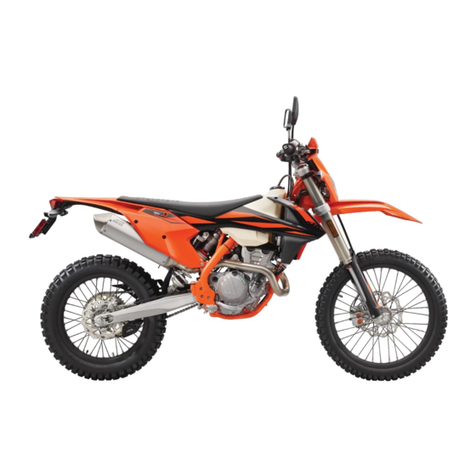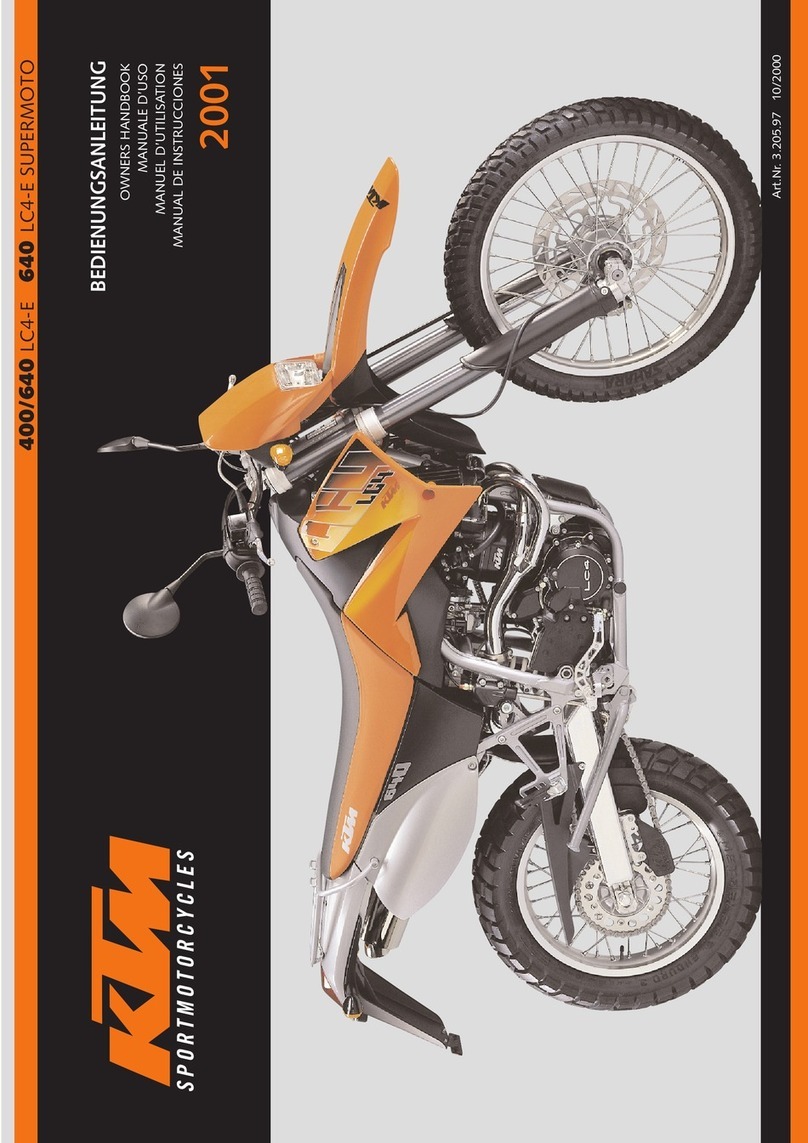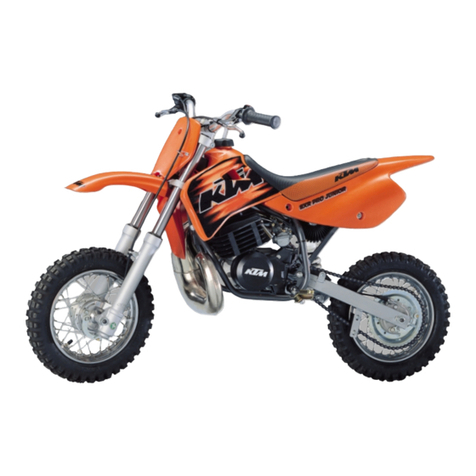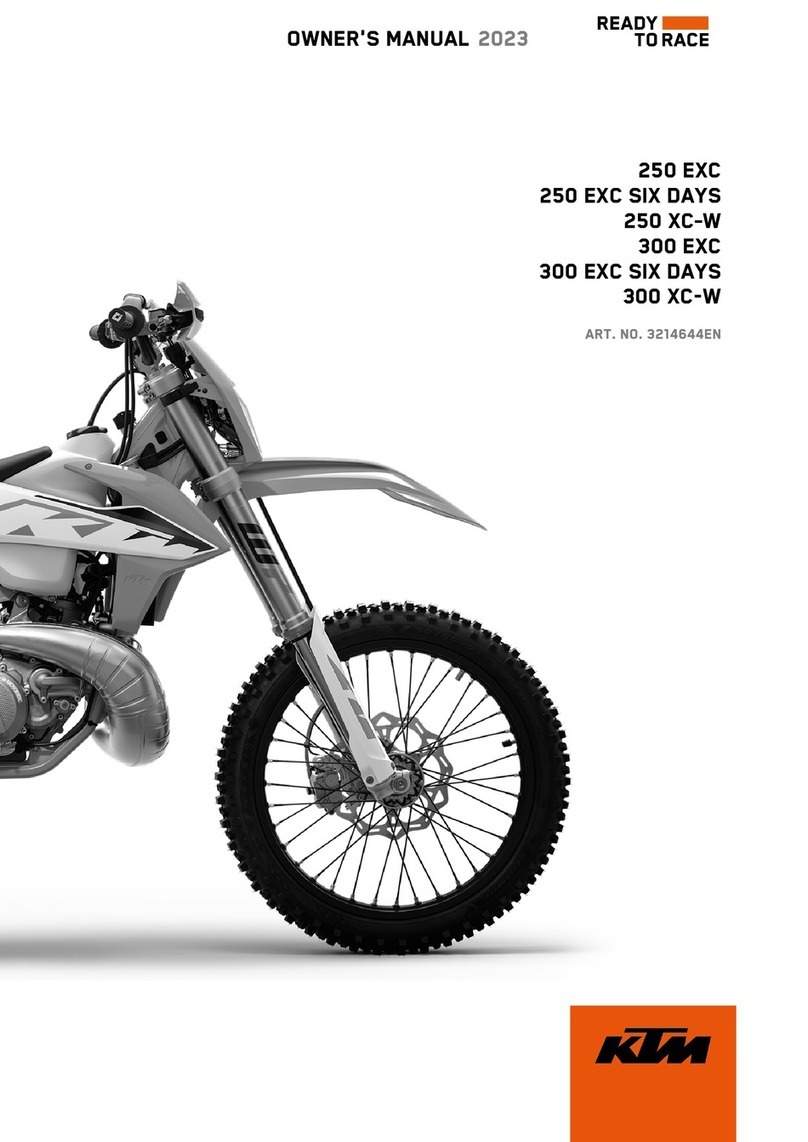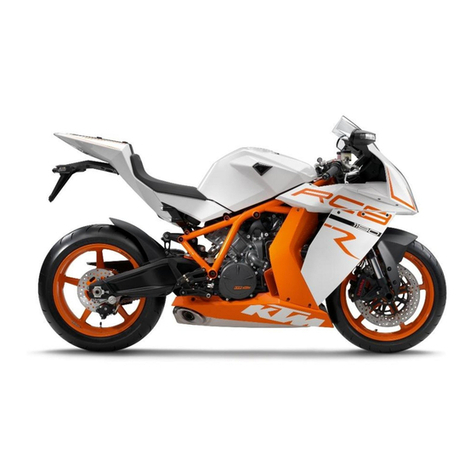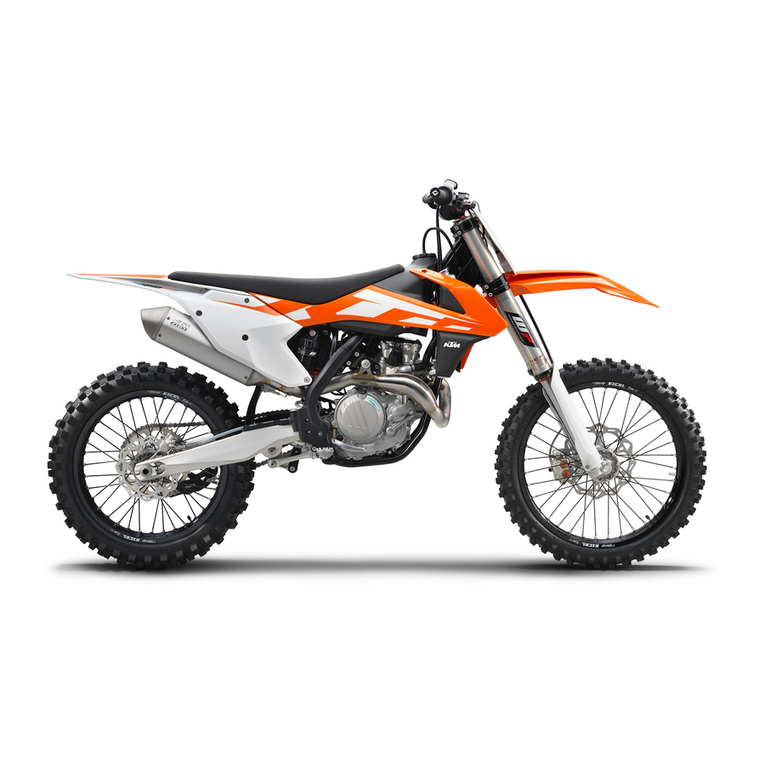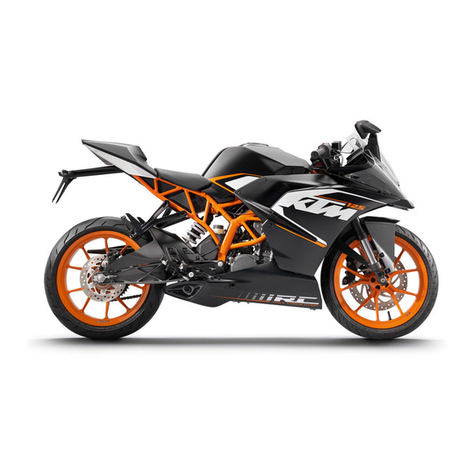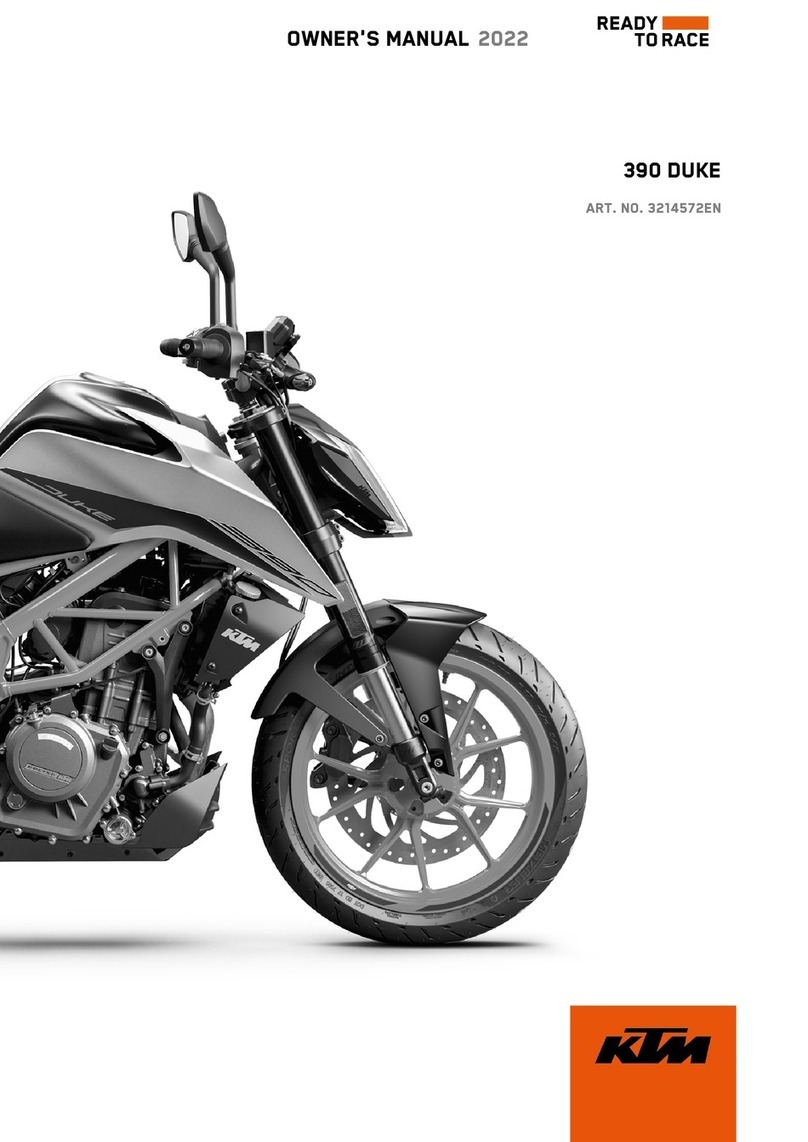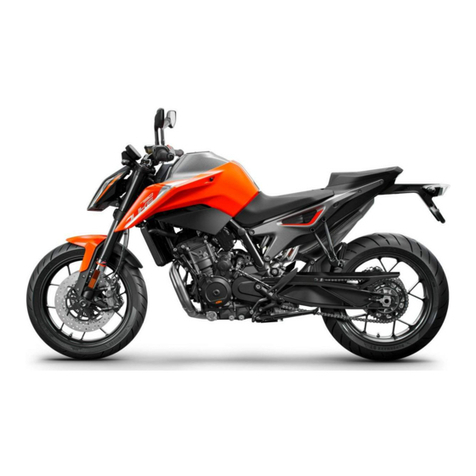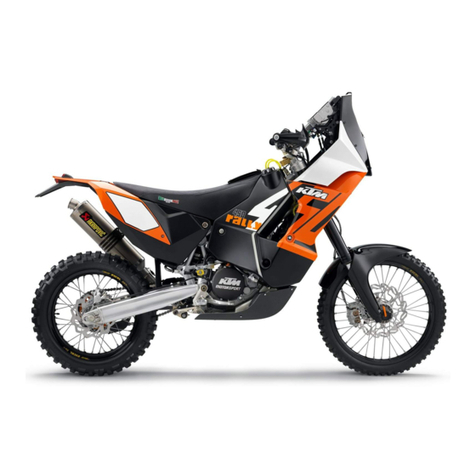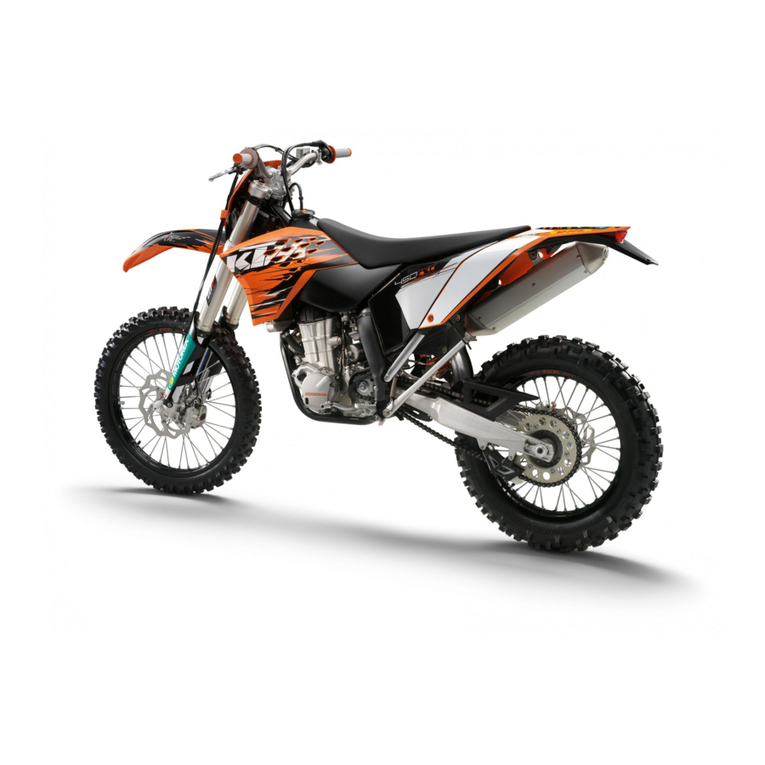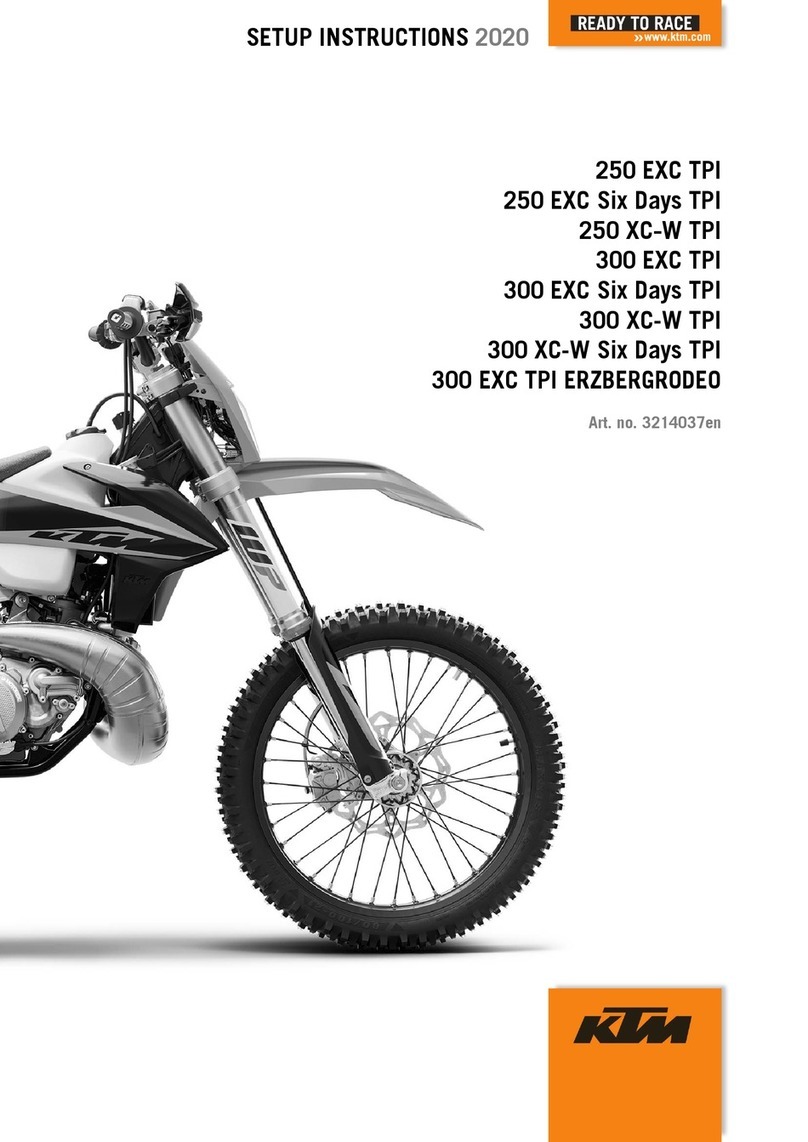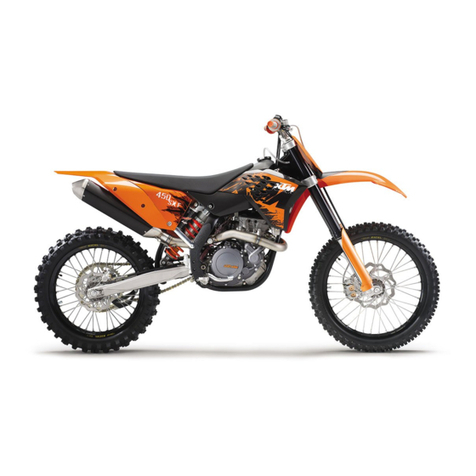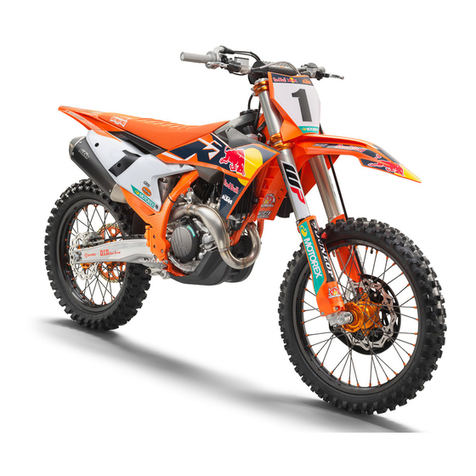ENGLISH
9
DRIVING INSTRUCTIONS
– To ensure that your youngster gets the feel of the hand
brake, have your youngster operate the hand brake while
you push the motorcycle. Do not start the engine before
your youngster has learned to apply hand brake with appro-
priate pressure.
– To familiarize your youngster with the operation of the hand
brake let him or her practice to operate the hand brake while
you are pushing the motorcycle. Do not start the engine
before he or she is thoroughly familiar with the use of the
hand brake.
– Initially, your youngster should ride back and forth between
two persons who help the young rider to stop the motorcy-
cle. However, you should also teach your youngster how to
stop the motorcycle himself/herself.
– To improve his/her riding skills, your youngster should prac-
tise to ride the motorcycle standing on the footpegs or to
ride at the slowest possible speed. Additionally, you can
arrange a series of obstacles and have your youngster drive
around them, etc.
– Pay attention to running-in procedure.
WARNING
– SX MODELS ARE DESIGNED FOR ONE PERSON ONLY. PASSENGERS ARE
NOT ALLOWED.
–T
HESE MODELS DO NOT COMPLY WITH THE REGULATIONS AND SAFETY
STANDARDS ESTABLISHED BY THE LAW. THEREFORE, THEY ARE NOT PER-
MITTED ON PUBLIC ROADS.
–A
LWAYS KEEP IN MIND THAT OTHER PEOPLE FEEL MOLESTED BY EXCES-
SIVE NOISE.
Running in
– Even very precisely machined sections of engine components
have rougher surfaces than components which have been
sliding across one another for quite some time. Therefore,
every engine needs to be broken in. For this reason, during
its first 5 hours the engine must not be revved up to its per-
formance limits.
– Apply low but changing loads for running-in.
– DO NOT DRIVE AT FULL LOAD FOR THE FIRST 5 HOURS!
Starting when the engine is cold
1 Open fuel tap
2 Put the gear in neutral
3 Activate cold-starting aid (choke)
4 Leave throttle closed or open it no more than 1
/3and kick
down kickstarter vigorously all the way.
WARNING
–T
O AVOID INJURY WHEN STARTING THE ENGINE, ALWAYS WEAR
STRONG BIKERS BOOTS!
–D
O NOT START THE ENGINE AND ALLOW IT TO IDLE IN A CLOSED AREA.
EXHAUST FUMES ARE POISONOUS AND CAN CAUSE LOSS OF CONS-
CIOUSNESS AND DEATH. ALWAYS PROVIDE ADEQUATE VENTILATION
WHILE THE ENGINE IS RUNNING.
!
CAUTION
!
DO NOT RIDE YOUR MOTORCYCLE WITH FULL LOAD AND DO NOT REV UP
THE ENGINE WHEN COLD. SINCE THE PISTON IS WARMS UP AND EXPANDS
FASTER THAN THE WATER COOLED CYLINDER, THIS MIGHT CAUSE ENGINE
DAMAGE. ALWAYS LET ENGINE IDLE UNTIL WARM OR DRIVE IT WARM AT
LOW R.P.M. SPEEDS.
What you should check before each start
When you start off, the motorcycle must be in a perfect
technbical condition. For safety reasons, you should make it a
habit to perform an overall check of your motorcycle before
each start.
The following checks should be performed:
1 CHECK TRANSMISSION OIL LEVEL.
A lack of gear oil leads to premature wear and finally results
in destruction of the gear wheels.
2 FUEL
Check that there is sufficient fuel in the tank; when closing the
filler cap, check that the tank venting hose is free of kinks.
3 CHAIN
A loose chain was fall off the chain wheels; an extremely
worn chain may tear, and insufficient lubrication may result
in unnecessary wear of chain and chain wheels.
4 TIRES
Check for damaged tires. Tires showing cuts or dents must
be replaced. Also check the air pressure. Insufficient tread
and incorrect air pressure deteriorate the driving performance.
5 BRAKES
Check correct functioning of the braking system. Verify that
there is sufficient brake fluid in the reservoir. The reservoirs
have been designed in such a way that brake fluid does not
need to be refilled even when the brake pads are worn. If the
level of brake fluid falls below the minimum value, this indi-
cates a leak in the braking system or completely worn out
brake pads. Arrange for the braking system to be checked by
an authorized KTM dealer, as complete failure of the braking
system can be expected.
Also check the state of the brake hose and the thickness of
the brake linings.
Check free travel at hand brake lever and foot brake lever.
6 CABLES
Check correct setting and easy running of all control cables.
7 COOLING FLUID
Check the level of cooling fluid when the engine is cold.
WARNING
–H
AVE YOUR YOUNGSTER WEAR PROPER PROTECTIVE GEAR WHENEVER
HE OR SHE RIDES THE MOTORCYCLE: HELMET, EYE PROTECTION, CHEST,
BACK, ARM AND LEG PROTECTORS, GLOVES AND BOOTS. TO SET A
GOOD EXAMPLE, BE SURE TO WEAR PROTECTIVE GEAR YOURSELF WHE-
NEVER RIDING A MOTORCYCLE!
–O
NLY USE ACCESSORY PARTS RECOMMENDED BY KTM.
Instructions for the first ride
– Verify that your KTM dealer performed the PREPARATION
OF VEHICLE jobs (see Customer Service Manual).
– Before your youngster takes his or her first ride, explain how
each of the controls works and check if your youngster has
understood what you explained. We recommend to review
the entire owner’s manual with your youngster item by item,
paying particular attention to the specially marked warnings
and pointing out the danger of injury.
– Adjust the basic hand brake lever position to your young-
ster's hand size. Your youngster should, of course, wear
gloves!
– To prevent injury, teach your youngster the basic riding skills
on soft ground, e.g. on a meadow or in the garden. Be sure
that there is room enough to maneuver, and that no other
riders are close.
